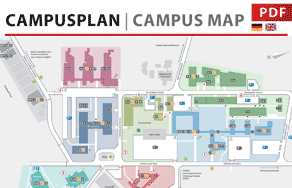The CoSA seminar will be held on January, 29th 2024 at 11:45am in MFC 1 room 2.-03/04.
We have planned the following presentation:
- Sven Ole Schmidt: SALOS - A Statistical Model-Based UWB Single Anchor System for Indoor Localization
The presentation will last approximately 20 minutes followed by 10 minutes of discussion. We look forward to a lively and active participation.
The seminars can also be found at https://www.th-luebeck.de/cosa/. If you would like to offer a talk as well, please feel free to contact us (fabian.john(at)th-luebeck.de).
Sven Ole Schmidt: SALOS - A Statistical Model-Based UWB Single Anchor System for Indoor Localization
Among others, UWB-based multi-anchor positioning systems have been established for industrial indoor localization systems. However, multi-anchor systems have high costs and installation effort. By exploiting the multipath propagation of the UWB transmission signal, the infrastructure and thus the costs of conventional systems are reduced. Our UWB Single Anchor Localization System (SALOS) successfully pursued this approach. Although the SALOS concept has been implemented and tested successfully already in an outdoor scenario with multipath propagation, it has not yet been evaluated in indoor environment with challenging multipath propagation. For this purpose, we have improved the re-invented the existing system substantially. In this work, we present SALOS as a modular system for indoor UWB-based single-anchor localization. We evaluate positioning via self formed channel impulse response measurements for on arbitrary modeled candidate points based on a 3-dimensional multipath propagation model for ultrawide band signals. The resulting single signal reflections are combined with respect to their statistical behavior in magnitude and phase. Since this forming can result in various combinations of channel impulse responses, we construct multiple sets for position estimation based on majority decisions. For measurements, we introduce our new modular system structure including a-newed measurement post-processing and communication via message oriented middleware. For evaluation, we install SALOS on a real indoor office floor. For a fixed grid of 20 positions, SALOS is evaluated in terms of position accuracy. The system results in correct position estimations for 75% of the measurements.


